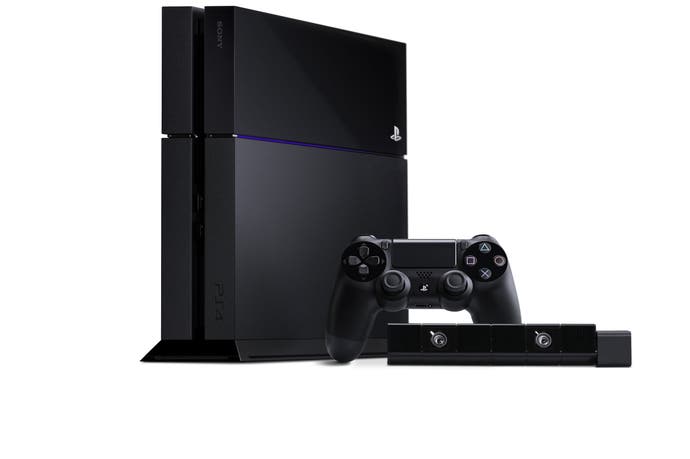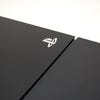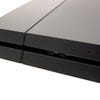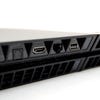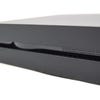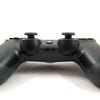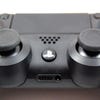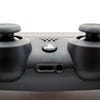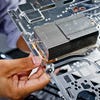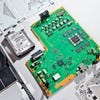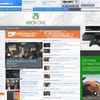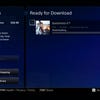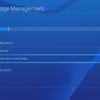Hardware Test: PlayStation 4
Digital Foundry's in-depth take on Sony's next-gen console.
This article was originally published on 13th November ahead of the PS4 launch.
We've been chasing the PlayStation 4 story since January and now, finally, the journey is over. In this piece, we'll be focusing on the hardware in particular, where we have spent some time with the system. We'll also be discussing the user interface, but in broader brushstrokes as the system software only came online very recently. Expect further updates on the functionality across the week.
So, at the nuts and bolts level, what is actually left to discuss? After all, across the months, virtually every aspect of the machine's spec has been discussed down to the most minute detail. Well, the remarkable truth is that until a few weeks ago very few people outside of Sony had seen an actual, working PlayStation 4 unit in its final form factor. Trade show code ran on PS4 development kits with a series of empty mock-up shells standing in for final hardware. Even the most recent Battlefield 4 and Killzone Shadow Fall press trips have centred on game code running on PS4 development hardware with no sign of the actual unit we have here for review. Quite why the console was so elusive remains unknown.
With the hardware in hand, any lingering doubts about the quality of the final product can finally be laid to rest. The PlayStation 4 is an impressive, very well-engineered piece of kit, delivering a true generational leap in console performance in a chassis that is actually smaller than the second generation "Slim" PS3 - and, as we'll demonstrate later, it carries out its business in a mostly discreet manner with only the smallest concerns about temperatures and heat dissipation.
"The harsh, wedge-like angular casing is striking, and a radical departure from the curved PS3 chassis, not to mention the more soft, rounded edges we see on many of today's high-end consumer electronics."
The mechanics of the construction are rather ingenious, but externally PlayStation 4's aesthetic is certainly of the love-it-or-hate-it variety. The harsh, wedge-like angular casing is striking, and a radical departure from the curved PS3 chassis, not to mention the more soft, rounded edges we see on many of today's high-end consumer electronics. A deep groove bisects the console around three of its sides, defining its somewhat divisive looks, but at the same time providing further venting in addition to the large exhausts on the rear of the unit. The PS4 can be positioned either vertically or horizontally, and for our money it looks much more striking in the former position (optional stand available, yours for £16/$20).
Hardware configuration and set-up
Setting up the device, we note the complete lack of analogue video outputs - it's HDMI only, with cable supplied in the box - although we are happy about the inclusion of Toslink SPDIF audio for legacy receiver support, along with a LAN port for those who prefer the best possible connection to their router. The PlayStation Camera gets its own bespoke input on the rear, although the AUX labeling perhaps hints at further functionality beyond the use of Sony's stereoscopic Kinect rival.
The new DualShock 4 (one supplied in the box) initially requires charging, connecting via USB just like its predecessor, the difference being that Sony has opted for a smartphone-style micro-USB connection this time around. We've discussed the next-gen joypads before and our opinion hasn't changed: the DualShock 4 is easily the best iteration of the classic Sony pad - reassuringly weighty, with the precision analogue sticks the stand-out element in the package. A headset is also included, but it's very much the most basic iteration you could imagine and probably the lowest quality element of the ensemble, feeling rather like the sort of bundled afterthought you get with a mobile phone.
"It's the end of the road for analogue video output - PlayStation 4 is purely digital device, supporting HDMI and Toslink AV outputs only."
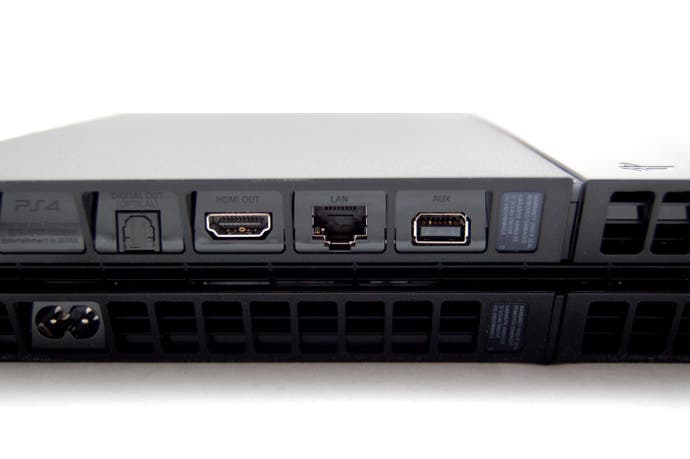
Actually powering up the machine isn't quite as straightforward as you might imagine. Power and eject buttons are almost hidden - narrow and thin, built into the groove of the console on the front. They're touch-sensitive in nature - providing no actual feedback, very similar to the launch PS3, when we'd have much preferred the high quality physical type of response we saw on the first PS3 Slim. Just like its predecessor, the PS4 can be turned on by pressing the PS button on the DualShock 4.
The similarities to the PlayStation 3 don't end there. The PS4 powers up (and indeed powers down) with the exact same "beep" heard on all PS3 models, a pleasing nod to the past. The new console boots with no flashy animation as such, just a white PlayStation logo on a pure black background, before the new PlayStation Dynamic Menu system manifests. We're in.
Not that there's actually much you can do with your PS4 once you power it up on the basic 1.01 firmware it ships with. There is access to the delightful Playroom app (PlayStation Camera required) but beyond that, a bewildering amount of functionality requires a PSN account - including Vita Remote Play and even the web-browser built into the firmware. Anyone who received a PlayStation 4 unit some time before the 1.5 system update was available was essentially left with a threadbare tour of the settings, the ability to set up an internet connection (where we find no 802.11n 5GHz WiFi support but otherwise a solid set-up) and not much else. What is curious is that firmware updates are no longer downloadable on your PC and flashable via USB storage - they're only available via retail disc and the internet. [Update: this actually can be done, but it's only available via the recovery menu]. At the very least though, retail games can be played on the 1.01 firmware - Call of Duty: Ghosts was released to the likes of Amazon weeks before the retail launch, and thanks to this, we were able to get a measure of the hardware's performance even without access to the crucial system update.
"Out of the box, there's not much you can do with the stock 1.01 firmware - or indeed the 1.05 'upgrade' you get on the first batch of retail games."
Heat, cooling and power consumption
At this point, with the system under load, we could finally answer the question of whether Sony let its aesthetics take precedence over more mundane matters like the noise and heat generated with the system. The size of the PlayStation 4 casing - or rather, the lack of it - has generated some level of controversy, especially in relation to the relatively gargantuan Xbox One chassis. On the one hand, we want our consoles to be small, svelte and unobtrusive - at home in the living room, office, den or bedroom - but at the same time we also need them to be reliable. The rule of thumb is that the hotter your console becomes, the more likely it is to fail over time. While Microsoft's reliability record was absolutely dreadful with the first two or three Xbox 360 revisions, the bottom line is that early iterations of both last-gen consoles had reliability issues and for the same reasons: a combination of too much heat in too small a box, along with less durable lead-free solder.
For the next generation, Microsoft has taken the low-risk route. The size of the casing, its attendant cooling assembly, plus the utilisation of a large external power brick (confirmed at 250W at a recent press trip) reveals a philosophy of putting reliability ahead of the looks of the product. On the other hand, Sony wants to have its cake and eat it. PlayStation 4 is obviously smaller, the power supply is integrated into the box, and the cooling assembly looks considerably less substantial than its Xbox One equivalent, with a patently smaller fan. Bearing in mind the more powerful GPU and the more demanding GDDR5 RAM, Microsoft's contention is that all of these factors will make the PS4 much hotter and louder than its alternative.
The reality is that Sony has done a pretty good job here. We'll get to the metrics in a moment, but first impressions are certainly reassuring. On start-up, the hardware is exceptionally quiet, but as you progress into gameplay, volume and heat does start to increase. PS4 also draws a fair amount of juice too - 80W at idle on the front-end menus (the "PlayStation Dynamic Menu" to give it its proper name), 95W based on in-game video playback, and around 110-120W during gameplay - that's about 10-20W more than the first release of the "Slim" PlayStation 3. Curiously though, bringing up the menu system while in-game sees another leap in power draw - up to the maximum of 140W.
"Maximum power draw we could extract from PlayStation 4 was 140W - by playing a game, pressing 'option' and bringing up the UI simultaneously. A few moments later, the fans began to spin up to an appreciably louder degree."
The figures sound meaty but the reality is that PlayStation 4 remains fairly discreet throughout general gaming - easily quieter than a launch PS3 overall, but not quite as unobtrusive as the latest PS3 Super Slim model (when its Blu-ray drive is inactive, at least). Only when you run a game and then move to the menus does the system start to kick out some serious heat. We measured 50-degrees Celsius venting from the rear (better out than in, we say) with the casing itself heating up to 45 degrees - that's approaching launch PS3 territory.
We ran a series of tests using an infra-red thermometer that we pointed at the "hot spot" area on the casing, where temperatures were consistently at their highest. We also used a basic noise meter to get an idea of the loudness of the system. Conditions weren't totally ideal - ambient noise was 40dB, but the impact of the fans was lessened considerably just one metre off and barely noticeable at all at three metres. The 'close' measurement is a literally a case of measuring the noise direct from the fan exhaust, where the PS4 is likely to be at its noisiest.
"When the system is drawing max power, the fans can get a little noisy - but across a general run of gameplay, the PS4's acoustics aren't overly obtrusive."
| Idle | Blu-ray | Gaming | Game + UI | |
|---|---|---|---|---|
| Max Temp | 40 Degrees Celsius | 41 Degrees Celsius | 44 Degrees Celsius | 45 Degrees Celsius |
| Power Draw | 80W | 100W | 131W | 140W |
| Noise: Close | 42dB | 42dB | 51dB | 53dB |
| Noise: 1 metre | 40dB | 40dB | 42dB | 42dB |
| Noise: 3 metres | 40dB | 40dB | 41dB | 41dB |
Tested in a level, 23 degrees Celsius environment, the PlayStation 4 proved to be absolutely fine, with perfectly acceptable noise when playing just 1m away from the console and a very quiet experience indeed with the console 3m away. Our only concern is how things may stack up for those living in hot countries where the ambient temperature will be a lot higher, or how the hardware will perform in the summer months. Certainly, the notion of a game running simultaneously with the UI causing a surge in power consumption is very strange indeed and hopefully something that can be addressed with a firmware update.
The PlayStation Dynamic Menus
The Dynamic Menu is actually pretty neat. A central "bar" shows your content, gives access to the web browser and Sony's audio visual services and allows you to access your library of PlayStation content. Above the bar, you'll find utilitarian aspects - settings, party configuration, friends lists, messages, trophies, notifications and the PlayStation Store. Beneath the bar, you interact with your games and services in a little more depth - an overview of games plus an outline of recent activities appears, while media functions offer a customised series of suggestions of material you may - or may not - want to watch. We also suspect that it's here that the more social elements of the interface are integrated. As none of our friends own PlayStation 4 yet, this is something we couldn't test in-depth.
Key features could be investigated briefly though. The PlayStation Store, visually, has much in common with the latest PS3 design, but while it still feels rather clunky and slow to respond in many ways, it is a marked improvement over the current-gen version. We were also pleased to see the prominence of "PS3 to PS4" upgrades. On the US store, Assassin's Creed 4, Call of Duty: Ghosts, Battlefield 4 and Injustice: Gods Among Us could be upgraded to next-gen for just $9.99. Sound Shapes and Flower ($6.99 and $14.99 a pop) could also be bought via Cross-Buy, meaning you get both PS3 and PS4 versions via a single purchase.
"Once upgraded to the 1.5 firmware, the PlayStation Store becomes available. PSN-only features like Vita Remote Play and the web browser are also accessible after the system upgrade."
First impressions of the web browser aren't hugely impressive though. Functionality seems to be there overall, but the process of using the DualShock for browsing is a pain, scrolling is jerky, response is quite poor and while the PS4 recognised that a USB mouse had been inserted, remarkably there appears to be no support for it in the current build of the browser. Up against virtually any other mainstream internet device - mobile, laptop or desktop - PlayStation 4 feels clunky and unresponsive.
There are some things that impress though - from unexpected areas. In our Xbox One UI preview, we were impressed with the way that Kinect could scan in users and the voice recognition was pretty cool. In truth, we've not heard great things about the PlayStation Camera from developers, but the player log-in via facial recognition worked very well while voice commands came in with a 100 per cent accuracy rate based on our brief testing. Logging in, taking screenshots, starting games by name - it all just worked. Right now you can't start the PS4 via voice, but hopefully Sony will add this functionality. Being able to boot up the system and start a game just by entering the room and talking to your console might sound like a gimmick, but in action it's surprisingly cool - and probably the first application of voice control we actually want to use.
The sharing functions also work out of the box, with the ability to share video over Facebook, exactly as revealed at the initial PlayStation Meeting back in February. A quick look at the PS4's hard drive reveals that 15 minutes of Call of Duty footage occupies 567MB. Initially we assumed that PS4's hardware encoder generates 720p30 video at 5mbps, yet a similar amount of Battlefield 4 action weighed in at a much meatier 915MB. What is rather unfortunate is that Facebook is the only option for sharing video clips right now - for reasons unknown, Sony doesn't allow you to copy the footage off onto a USB drive where the user could do a lot more with it, like upload to YouTube for example. Similarly, screenshots can't be exported either - they need to be shared via Facebook or Twitter. What is useful is the way in which the share button can be customised - standard mode sees a short button press being up the share menu, while a long press takes a screenshot. The 'easy screenshot' mode reverses that, while in both modes, a double-tap of the share button sets the start point for a video clip.
"PlayStation 4's media sharing functions look intriguing - we're only sorry that there appears to be no way to copy off screenshots or videos to an external USB drive."
Background downloading
The nemesis of PlayStation gamers everywhere is the prolonged, intensely annoying mandatory installations. Whether it's system software updates, patches, or both, PlayStation 3 was the most friction-filled console of the current generation. As promised, things have changed on PlayStation 4.
First up, system software updates can run in the background, your machine silently updating without you knowing about it - should you choose. And that's a good thing too, because updating to the 1.5 firmware using the classic "sit there and watch it happen" manner wasn't a great experience. The update took around three minutes to download on a fibre connection, then a further five minutes to actually install.
Downloading a game from the PlayStation Store was also an interesting experience. We opted for Battlefield 4 - a massive 35GB. The PS4 would allow us to install and play the game with just 6288MB piped down from the internet, the net result being that this was the complete single-player campaign. To get online and play multiplayer, you need for the rest of the game to wind its way down the pipe. This isn't quite the seamless PlayGo experience we were hoping for, but it's better than nothing.
Moving onto the disc side of things, Call of Duty: Ghosts can be inserted and played just like any normal game - and you can play immediately while the code spools off 32GB of data onto the hardware as you play. We didn't have time to conduct an in-depth like-for-like performance analysis here, but gameplay seemed unaffected, with the only noticeable difference being longer level loading times before the game had fully cached - the first level, for example, loads 16 seconds faster than playing the game from scratch.
Overall, it's clear that some thought is being put into this, and we're looking forward to testing out more games. Where we're still unclear is the extent to which online downloads can provide a completely seamless experience and what kind of connection you need to get this. Sony's expectations of the quality of your broadband connection remain unknown for now - and bearing in mind that screen-sharing and live-streaming received such prominence in the initial marketing of the machine, we still can't help but wonder how many people will be left out of these potentially cool features.
"The dreaded download progress bar isn't completely gone - but its presence on PlayStation 4 shouldn't be anything like as frustrating as it was on its predecessor."
PlayStation 4 - our thoughts so far
We usually conclude our hardware tests with a verdict, but until we've spent more time with the user interface, and tested more of the key features - like Vita Remote Play - we can only offer up some preliminary thoughts.
There's some stand-out technology here for sure. Sony has handed in a high quality, traditionally console-sized box that runs a cutting-edge processor with bags of graphics power and has done so in a well-designed enclosure, that may not be ultra-cool, but dissipates heat well and remains fairly quiet in warm ambient temperatures. However, the first order of business once we have the kit in our offices will be to ratchet up the heating to see if the unit remains as quiet during the summer months. The only doubt we have here comes when the system is pushed to the limit - the extra 20W consumed by the UI in combination with the game sees fan noise increase significantly.
Other aspects of the kit - like the DualShock 4 and the PlayStation Camera - also fare well. The new controller feels sublime, to the point where Guerrilla Games felt comfortable enough to completely turn off auto-aim - a bit of a risk based on experience with current-gen controllers, but the DualShock 4 is more than up to the task. The Camera's facial recognition and voice control also proved decent. We're not looking at Kinect-level integration, but it's impressive nonetheless, and entirely optional.
Where the jury's still out is on the user interface. We've just not had anything like enough time to put it through its paces. With that said, while some of clunkiness in the PlayStation Store is a touch off-putting, there's a sense that everything is well organised and easy to find, with a rich vein of useful functionality. The fact that the proliferation of the PS3's download/install progress bars has now been reduced significantly can only be a good thing.
PlayStation 4 may well be based on PC hardware, then, but based on these first impressions, it feels like much more of a console - a pure gaming thoroughbred - than its predecessor.
